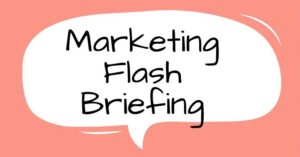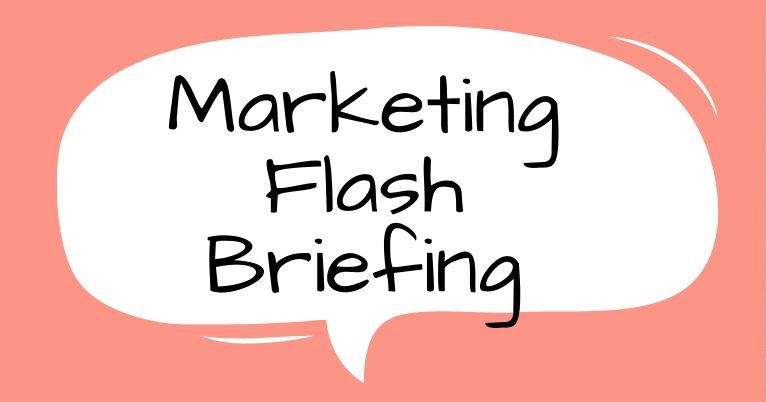- +1 512-591-8295
- [email protected]
- Mon - Fri: 9:00 - 16:00

You’ve likely heard people concerned about a sudden a very drastic decrease in the engagement on their Instagram stories … here’s why and what you should do.
When there’s breaking marketing news outside of our normal weekly marketing information we’ll be bringing it to you as a marketing flash briefing.
First, you need to understand what happened.
Instagram updated their algorithm to get rid of the automated bots that were doing engagement on stories.

A lot of people thought that if you watch somebody’s story on Instagram, that person is going to see that you watched the story and follow you. So someone started selling automated bots by saying we’ll get you followers, because we’ll have the bot watch all of these stories and then when the person sees that you watched they’ll follow you.
Granted, that can happen, but Instagram knew it was happening. So for quite a while, the engagement level on Instagram stories has been artificially inflated. That’s bad for you as an Instagram creator because you can’t properly gauge what your audience is actually interested in, so this is actually a good change. It could be that you were producing things that your real target audience had absolutely no interest in, and you thought they did so you kept repeating that same type of content because you were receiving inflated engagement rates on your stories.
Here’s a couple of problems I’ve always seen with Instagram stories (and Facebook stories as well). Instagram was trying to be like Snapchat and now TikTok, kind of pull in some of those concepts that were working for those other platforms. I never think you should just jump in and try to become someone else’s platform when you already have a good one, so it never fully made sense to me from a business perspective.
When you consider that these Stories only stay around for 24 hours, it doesn’t make a lot of sense using Stories for business purposes. It does have its place, yet when you consider that someone needs to see or hear your message – that same one message – an average of 11 times for it to be absorbed, a story that disappears in 24 hours (and is only shown to the viewer one time), you don’t get that repetition that study after study have proven needs to happen.
I always recommend that you automate things other than engagement. In our #marketU social media marketing bootcamp we teach you these automation strategies, but one of the things we always teach is that engagement needs to be real and authentic with you or people on your team actually engaging.
There’s some best practice standards we always tell you – first is authenticity. The stories that you’ve been publishing may have been authentic and so you want to keep doing that. Consistency is also key, so if you do have a base of followers – non bot followers – that are used to seeing you post a story at the same time of day, you would want to keep doing that.
There’s also other ways you can be authentic and consistent on the platform without relying so heavily upon Instagram stories. You can make regular posts and cover both of those strategies.
Also consider the 80/20 rule. It says that no more than 20% of your content should be salesly or directly business -related; however, you do want to make sure that you include some type of call to action in a minimum of 20% of your posts. You can actually aim much higher with posts containing a call to action – 50 to 60% easily if you consider that call to action doesn’t need to be a direct request for sales. You can ask a question asking your followers’ opinion for example.
The most important thing we tell all of our clients repeatedly, and that we consistently tell the members of #marketU social media marketing bootcamp – is that you need to get your customers off social media. Social media is a great place to have those authentic engagements with your customer base, show pictures, share videos, and all of those things to make it feel more personal than a traditional website or email marketing platform can do alone. However, these are third-party platforms, and whenever you’re on a third-party platform they can change the rules on you overnight … just like they did on Instagram. It can negatively impact you if you have all of your contacts on social media but have not bothered to get their email addresses or move them over to your website where maybe you have a form they can fill out or at least cookie tracking set up so that you have a way to contact these people any time that any of these third-party platforms change their rules.
One of my clients came to me after Etsy closed down her store that was generating over $10K per month. She tried to appeal it, but as a third-party platform they had complete control.
You always need to have a place where you have your clients coming to you, that you have full control over.
Another best practice is knowing for your demographic group – and that does not include bots – the best time to post that will get you more engagement. There are some times that are proven more effective, and you want to combine that with the consistency that we mentioned. You don’t have to necessarily post multiple times per day or even every day, although on Instagram those can both be helpful, but you do want to strategically choose when you post.
Download our Best Times to Post eBook for the latest research
Instagram is obviously a very visual platform, so you want to have nice images, and even better you want videos because videos generate over 21% more interactions that just a regular image post. There’s a correlation between those profiles that have a larger audience – they tend to use more videos than those profiles that don’t have as large of an audience. It’s still not the majority of their posts; the majority is still static images, but if you increase the percent of videos that you’re sharing, you’ll likely see an increase in your engagement.
Another thing we notice is that long captions are more common – over 31% of people are using captions with 300 characters or more. But, the Instagram captions with 50 words or less have the highest engagement rate, so in the case of text on Instagram less is more.
You also want to use few hashtags in the caption. You can add more in the first comment under your post, that is a pretty standard practice and can still work to help your post be seen by more people, but in the actual caption you want no more than two or three – more than three hashtags in an Instagram caption drastically decreases engagement. It just makes it harder to read; that hashtag is like a mental break or pause every time you come across it, so it makes a caption less readable, and if readability is lower engagement will also be lower. So be strategic with your hashtag use.
Just remember there’s no real shortcut to any of these platforms. You are the commodity on social media. That’s why the platform is free to users, because the platform is selling YOU to the advertisers. So the platform is designed to get the viewer to stay there longer so that you see more ads, however from a business standpoint, if you’re not paying for advertising there’s not really a lot of benefit to the platform to get you more viewership. So you need to also consider that whenever we talk about third-party platforms, especially if they’re free to use there’s a reason for that, and it means that if you’re a business the reason is not in your favor. So you need to make sure that you’re following best practices and “white hat” strategies. Don’t go and buy a bot to get people viewing your Instagram stories – that doesn’t work long term because those things will always get cut off.
Have you been impacted by this recent Instagram update? I’m curious to see what you’ve noticed. Drop a comment below and let us know.

Simple processes. Effective results.
The exact step-by-step how to for individual marketing strategies plus how to put it all together for use with YOUR unique business.
Get solid marketing strategies, designed for entrepreneurs on the track to 7-figures and beyond, right in your inbox.

This website uses cookies to ensure you get the best experience on our website. By continuing to use the website, you agree to our use of cookies. We do not share or sell your information. More info
